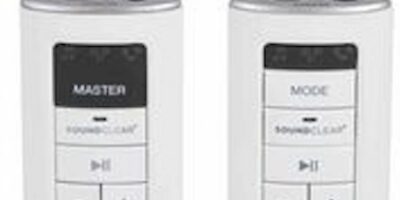The latest member of NXP’s EdgeVerse portfolio has been launched at CES in Las Vegas (7 to 10 January). The i.MX 8M Plus heterogeneous application processor is the first i.MX family to integrate a dedicated neural processing unit (NPU) for advanced machine learning (ML) inference at the industrial and IoT (Internet-of-Things) edge.
The NPU delivers 2.3Toperations per second and is combined with a quad-core Arm Cortex-A53 sub-system running at up to 2GHz. There is also an independent real-time sub-system with an 800MHz Cortex-M7, an 800MHz audio DSP for voice and natural language processing, a dual camera image signal processors (ISP) and a 3D GPU for rich graphics rendering. The i.MX 8M will enable edge devices to make intelligent decisions locally by learning and inferring inputs with little or no human intervention, says NXP. Target applications are people and object recognition for public safety, industrial machine vision, robotics, hand gesture, and emotion detection with natural language processing for seamless human-to-device interaction with fast response time and high accuracy.
The applications processor is based on 14nm LPC FinFET process technology. The i.MX 8M Plus can execute multiple, highly-complex neural networks simultaneously, these include multi-object identification, speech recognition of 40,000+ English words and medical imaging. The NPU is capable of processing Mobilenet, a popular image classification network at over 500 images per second, adds NXP.
Developers can off-load machine learning inference functions to the NPU, allowing the Cortex-A and Cortex-M cores, DSP and GPUs to execute other system-level or user applications tasks. The vision pipeline is anchored by dual integrated ISPs that support two high-definition cameras for real-time stereo vision or a single 12Mpixel resolution camera and includes high dynamic range (HDR) and fisheye lens correction for real-time image processing in surveillance, smart retail applications, robot vision and home health monitors.
For voice applications, the i.MX 8M Plus integrates a HiFi 4 DSP that enhances natural language processing with pre- and post-processing of voice streams. The Cortex-M7 domain can be used to run real-time response systems while the applications processor domain executes complex non-real-time applications. It reduces overall system-level power consumption by turning off the application processor domain while keeping only the Cortex-M domain alive for wake word detection. For advanced multimedia, and video processing, the processor can compress multiple video feeds using the H.265 or H.264 HD video encoder and decoder for cloud streaming or local storage, 3D/2D graphics, and Immersiv3D audio with Dolby Atmos and DTS:X.
In industrial scenarios, it can be used in machines that inspect, measure, precisely identify objects and enable predictive maintenance by detecting anomalies in machine operation. It can also support making the factory human machine interfaces (HMIs) more intuitive and secure by combining accurate face recognition with voice/command recognition and gesture recognition. The i.MX 8M Plus integrates Gigabit Ethernet with time sensitive networking (TSN), which combined with Arm Cortex M7 real-time processing provides deterministic wired network connectivity and processing, NXP explains.
Other features for industrial use are error correction code (ECC) for internal memories and the DDR interface.
The family is expected to be qualified to meet the stringent industrial temperature range (-40 to +105 degrees C ambient).
NXP at CES 2020: booth, CP-18
http://www.nxp.com







